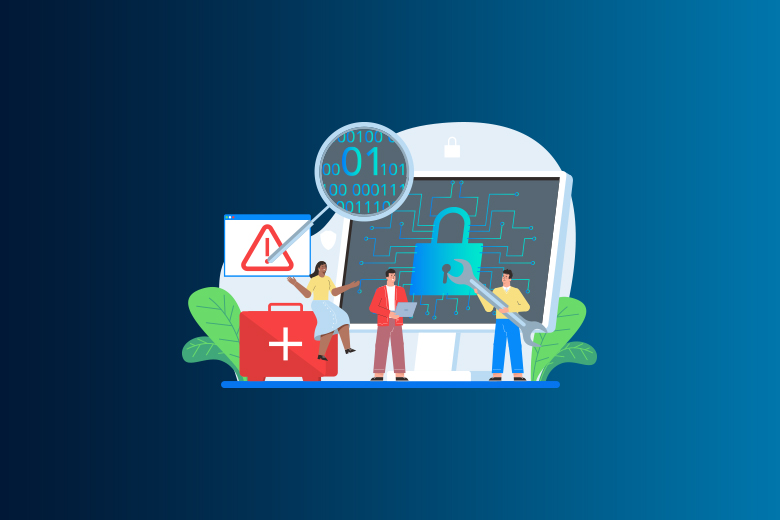05 July 2023
SafeAeon Inc.Introduction
In today's ever-evolving cybersecurity landscape, organizations face sophisticated threats that target their endpoints and networks. To effectively defend against these threats, businesses require robust security solutions that offer comprehensive detection, response, and mitigation capabilities. Two prominent options in the cybersecurity field are Endpoint Detection and Response (EDR) and Managed Detection and Response (MDR) services. This article aims to provide a clear understanding of the roles and advantages of EDR and MDR, empowering organizations to make informed decisions when devising their cybersecurity strategies.
Endpoint Detection and Response (EDR): Enhancing Endpoint Security
Endpoint Detection and Response (EDR) solutions focus on securing individual endpoints, such as workstations, servers, and mobile devices. By deploying lightweight agents directly on endpoints, EDR systems enable real-time monitoring, threat detection, and incident response capabilities. These solutions collect and analyze endpoint data to identify suspicious activities, detect malware, and investigate potential security incidents. With advanced features like behavioral analytics, machine learning algorithms, and integration with threat intelligence, EDR enhances endpoint security by rapidly identifying and responding to endpoint-specific threats.
Managed Detection and Response (MDR): Comprehensive Security Solutions
Managed Detection and Response (MDR) services offer comprehensive security solutions that extend beyond the boundaries of individual endpoints. MDR providers combine advanced technologies, expert analysts, and proactive incident response capabilities to provide holistic protection for organizations. MDR involves continuous monitoring of networks, endpoints, cloud environments, and more. By leveraging threat intelligence, behavioral analysis, and machine learning algorithms, MDR detects and responds to sophisticated threats across various layers of an organization's digital infrastructure. MDR services excel in providing comprehensive security coverage and proactively addressing security incidents.
EDR vs MDR: Scope, Deployment, and Incident Response
Scope: EDR solutions primarily focus on securing individual endpoints, providing granular visibility into activities occurring on those devices. In contrast, MDR services extend their scope to encompass broader network environments, cloud platforms, and other components of the digital infrastructure. MDR offers a holistic view of an organization's security posture, enabling comprehensive threat detection and response capabilities.
Deployment and Management: EDR solutions are deployed directly on endpoints, requiring installation and ongoing management on each device. Organizations need to manage the infrastructure and personnel in-house. On the other hand, MDR services are typically outsourced, enabling organizations to leverage the expertise of dedicated security teams without the burden of managing infrastructure and personnel internally.
Incident Response: EDR tools primarily focus on detecting and investigating potential security incidents on individual endpoints, providing valuable data for incident response. MDR services excel in incident response capabilities, offering 24/7 monitoring, proactive threat hunting, and dedicated incident response teams to efficiently address security incidents across the entire digital landscape of an organization.
EDR and MDR: Advantages, Decision-making, and Considerations
EDR Advantages: EDR solutions excel in providing granular visibility and control over individual endpoints, enabling swift detection and response to endpoint-specific threats. They are ideal for organizations seeking enhanced endpoint security, centralized management, and those with in-house security expertise and infrastructure.
MDR Advantages: MDR services offer comprehensive threat detection and response capabilities across the entire digital infrastructure. They provide access to a dedicated team of experts, advanced technologies, and proactive threat hunting capabilities. MDR is suitable for organizations looking to outsource their security operations, enhance incident response capabilities, and gain a broader view of their overall security posture.
Decision-making: When choosing between EDR and MDR, organizations should evaluate their specific requirements, available resources, and budgetary constraints. Factors such as the size of the organization, the complexity of the digital infrastructure, and the need for in-house security expertise should be considered to make well-informed decisions.
Conclusion:
In the contemporary landscape of cybersecurity, both EDR and MDR solutions play pivotal roles in protecting organizations against evolving threats. EDR focuses on securing individual endpoints, providing granular visibility and control. MDR offers comprehensive threat detection and response capabilities across the entire digital infrastructure. By understanding the roles and advantages of EDR and MDR, organizations can make well-informed decisions and tailor their cybersecurity strategies accordingly. For more information or assistance, reach out to the experts at SafeAeon. Safeguard your digital infrastructure with the right security solution and stay ahead of evolving threats.














